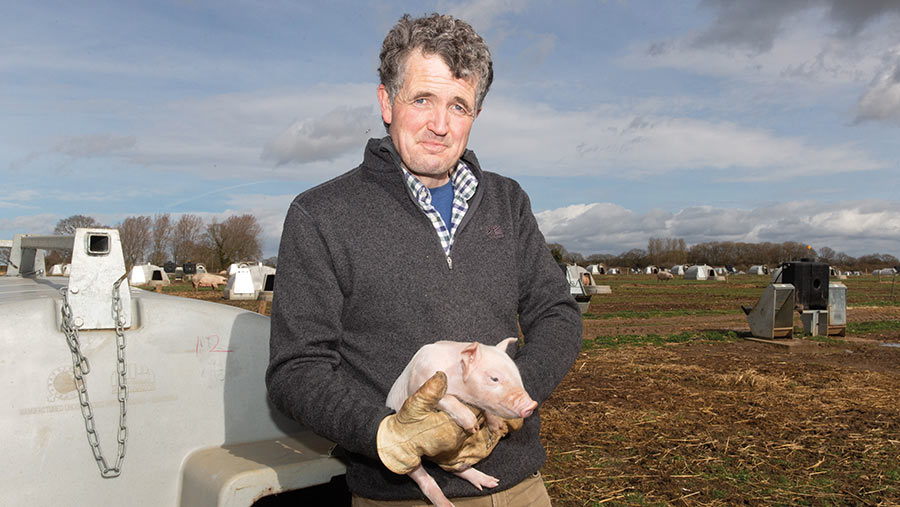Farmer Focus: Grass limits heat stress in pig herd
 © Tim Scrivener
© Tim Scrivener Looking back over my past few Farmer Focus articles, I have to confess I have been going a little bit off-piste this year, covering health and safety, young people and the government’s apprenticeship scheme.
So, as we are now halfway through the year, I thought it was time I started a round-up of the various pig projects and trials with which we are currently involved at LSB.
The biggest of these is our cover crop trial, which has been proving a great success and has generated a wide following via my social media updates on Twitter.
See also: Why colostrum is so important for newborn pigs
The study is not just looking for the benefits green cover has to the pig herds right now, but also the pros and cons it creates for the following crops over subsequent years.
From an environmental point of view there’s the habitat it provides, the erosion it prevents and the improvements in soil health that can deliver. All these factors are being monitored by a wide range of partners in this major collaborative trial.
As the farmer, my focus is on the pig herds. To date we have found ways of retaining green cover for longer with changes to our layout and, most significantly, by adopting a unique paddock area flipping strategy that allows sections of the pig field to rest and recover between sow occupations.
Sows graze grass for gut fill and don’t eat their bedding, which saves on straw. The increase in fibre the sows are digesting has also helped at farrowing, and we now open up areas of fresh grazing to sows about 10 days before they head off to farrow.
This helps prevent constipation – a major cause of slow birthing, which in turn is exhausting for the sows and frequently results in higher piglet mortality.
One other previously unappreciated advantage for the pigs is that the grass paddocks radiate less heat back up at the sows, reducing heat stress risk. We have found that on a warm day the grass paddocks are 7-8C cooler than a paddock which has just bare earth.
There is still much to learn, and we will continue to innovate and report the progress to other producers and the wider community as we go.
